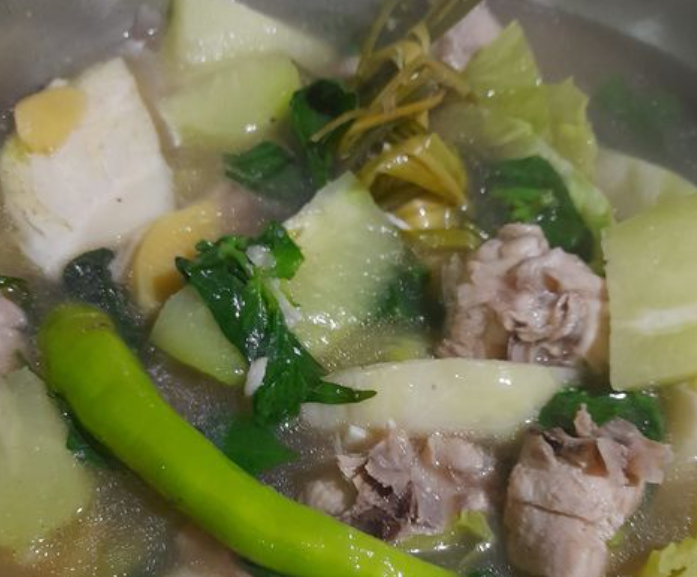
Tinola – The Ultimate Guide to a Beloved Filipino Dish
Tinola is more than just a dish; it’s a cherished symbol of Filipino comfort food. Packed with nutritious ingredients, this savory chicken soup embodies the essence of home cooking, blending simplicity, flavor, and tradition in every bowl. Whether you’re a long-time fan of Filipino cuisine or a curious foodie looking to explore, Tinola promises to warm your heart and satisfy your taste buds.
What is Tinola?
The Roots of Tinola
Tinola is a traditional Filipino soup that has been around for centuries. Known for its mild, gingery broth and nourishing components, it’s a dish that graces tables during family gatherings and everyday meals. Its origins are deeply rooted in Filipino culture, even making a notable appearance in Jose Rizal’s classic novel Noli Me Tangere.
Why Tinola is a Filipino Staple
This dish stands out in Filipino cuisine because of its simplicity and versatility. Tinola’s appeal lies in its ability to be both hearty and healthy, making it a favorite for rainy days or when someone needs a comforting meal.
Essential Ingredients for Tinola
The Core Components
A well-made Tinola requires fresh, high-quality ingredients that come together to create its signature flavor and aroma. Here are the must-haves:

Chicken
Bone-in chicken pieces like drumsticks, thighs, or wings are the heart of Tinola. These cuts infuse the broth with rich, savory flavors.
Green Papaya or Chayote
This vegetable adds a subtle sweetness and soft texture to the soup, perfectly balancing the savory broth.
Moringa Leaves or Spinach
Moringa leaves (malunggay) are traditional, but spinach can be used as a substitute. Both bring vibrant color and a boost of nutrients.
Aromatics
The trifecta of ginger, garlic, and onion forms the flavor base of Tinola, creating its distinctive taste and aroma.
How to Cook Tinola: Step-by-Step Guide
Preparation
- Prepare the chicken: Rinse and cut into serving pieces.
- Slice the vegetables: Peel and slice the green papaya or chayote. Wash the greens.
- Prepare the aromatics: Peel and slice ginger, mince garlic, and chop onions.
Cooking Process
1. Sauté the Aromatics
Heat oil in a pot and sauté garlic, onion, and ginger until fragrant. This step builds the flavorful base of your Tinola.
2. Cook the Chicken
Add the chicken pieces and cook until lightly browned. This seals in the flavors and gives the broth depth.
3. Simmer the Soup
Pour in water or chicken stock and bring to a boil. Reduce the heat and let it simmer until the chicken is tender.
4. Add the Vegetables
Add the green papaya or chayote and cook until tender. Finally, stir in the moringa leaves or spinach and let it simmer for another minute.
Variations of Tinola

Tinolang Isda (Fish Tinola)
Swap chicken for fish like bangus (milkfish) or tilapia for a lighter, seafood-inspired version.

Vegan Tinola
Replace chicken with tofu or mushrooms and use vegetable stock. This variation is perfect for plant-based eaters.

Beef or Pork Tinola
While less traditional, beef and pork versions add a hearty twist to the classic recipe.
Health Benefits of Tinola
Rich in Nutrients
Tinola is a powerhouse of vitamins and minerals, thanks to its fresh ingredients. Moringa leaves, for instance, are loaded with antioxidants and nutrients like vitamin C and iron.
Boosts Immunity
The ginger in Tinola is known for its anti-inflammatory and immune-boosting properties, making it an excellent choice during flu season.
A Low-Calorie Comfort Food
Despite its hearty nature, Tinola is relatively low in calories, making it a guilt-free indulgence.
Serving Suggestions
Perfect Pairings
Tinola is best enjoyed with steamed white rice. A side of patis (fish sauce) with calamansi for dipping adds an extra layer of flavor.
Best Served Hot
Tinola is at its best when served piping hot, allowing the flavors to meld beautifully with the steaming broth.
Tips for Cooking the Best Tinola
1. Choose Fresh Ingredients
The quality of your ingredients directly impacts the taste. Always opt for fresh chicken, vegetables, and aromatics.
2. Enhance the Flavor
A splash of fish sauce or a dash of black pepper can elevate the dish to new heights.
3. Don’t Overcook the Greens
To preserve their nutrients and vibrant color, add the greens at the very end of cooking.
Common Mistakes to Avoid
Using Boneless Chicken
Bone-in chicken is essential for a flavorful broth. Boneless cuts don’t provide the same depth.
Skipping the Sautéing Step
Sautéing the aromatics enhances the overall taste and should never be skipped.
The Legacy of Tinola
Tinola stands as a testament to the beauty of Filipino cuisine. Its simplicity, adaptability, and nourishing qualities make it a dish that transcends generations and borders. Whether you’re recreating a family recipe or trying it for the first time, Tinola promises a comforting experience.
FAQs
What can I use instead of green papaya?
Chayote is an excellent substitute and provides a similar texture and flavor.
Can I skip the ginger in Tinola?
Ginger is a key ingredient that gives Tinola its distinct taste. While you can reduce it, skipping it entirely alters the flavor.
How long can I store Tinola?
Tinola can be refrigerated for up to 3 days in an airtight container. Reheat thoroughly before serving.
Is Tinola suitable for kids?
Absolutely! Its mild flavor and nutritious ingredients make it a kid-friendly option.
What makes Tinola unique compared to other soups?
The gingery broth, combined with fresh vegetables and chicken, sets Tinola apart as a flavorful and healthy dish.
You may also like Cebuano Dishes and Filipino food
Table of Contents
Giovanni Carlo P. Bagayas is a seasoned travel guide and passionate explorer from the Philippines. With years of experience uncovering the hidden gems of his homeland, Giovanni has dedicated his career to showcasing the beauty, culture, and adventure that the Philippines has to offer. As the author of Best Philippines Travel Guide, he combines his expertise and love for travel to provide insightful tips, detailed itineraries, and captivating stories for travelers seeking unforgettable experiences in the Philippines. Giovanni’s mission is to inspire wanderlust and help visitors discover the true essence of his vibrant country.
